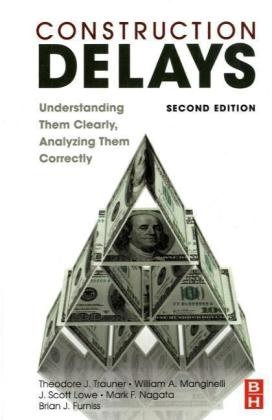Read more
Delays in construction projects are frequently expensive, since there is usually a construction loan involved which charges interest to the project whose costs are time dependent, and ongoing inflation in wage and material prices. This book points out the shortcomings of these faulty methods and explains how a delay analysis should be performed.
List of contents
ForewordAcknowledgementsIntroduction to Second EditionChapter 1: Project SchedulingThe Project ScheduleThe Purpose of a Project ScheduleTypes of Project SchedulesWhat is the Contemporaneous Schedule?What is the Critical Path?What is Float?Who Owns Float?Reviewing and Approving the Project ScheduleEarly Completion SchedulesChapter 2: Types of Construction DelaysWhat is a delay?Critical versus Non-Critical DelaysExcusable versus Non-Excusable DelaysCompensable versus Non-Compensable DelaysConcurrent DelaysChapter 3: Measuring Delays'the BasicsThe Importance of PerspectiveUse the Contemporaneous Schedule to Measure DelayDo Not Create Schedules After-the-Fact to Measure DelaysWhat to Do When there is No ScheduleWhat is the As-Planned Schedule?What is As-Built Information?The Importance of the Critical PathThe General Method for Analyzing a Schedule for DelaysThe Unique Position of SubcontractorsChapter 4: Delay Analysis Using Bar Chart SchedulesBar Chart Schedules versus CPM SchedulesDefining the Critical PathQuantifying Delays Using Bar Chart SchedulesChapter 4 ExampleChapter 5: Delay Analysis Using CPM SchedulesThe Advantages of Using CPM Schedules to Measure DelaysIdentifying the As-Planned ScheduleCorrecting versus Leaving ErrorsIdentifying Schedule Updates for the Purpose of Measuring DelaysUse of Scheduling Software and Other Software Tools in the Quantification of DelaysChapter 5 ExamplesChapter 6: Delay Analysis When there is No ScheduleUse of Contemporaneous Documents for Sequence and TimingUsing an As-Built Analysis to Quantify DelaysChapter 7: Other Analysis Techniques'Their Strengths and WeaknessesUsing Fragnets to Quantify DelaysWindows TechniquesImpacted As-Planned AnalysesCollapsed As-Built AnalysesAnalyses Based on DollarsBut-For Schedules, Analyses, and ArgumentsChapter 8: An Owner's Damages Due to DelayLiquidated DamagesActual DamagesChapter 9: A Contractor's Damages Due to DelayGeneral Guidelines for the Presentation and Recovery of DamagesTypes of Delay DamagesEscalation of Labor CostsEquipment CostsMaterial CostsOther Delay CostsChapter 10: Home Office OverheadWhat is Home Office Overhead?Effects of Delays on Home Office CostsEichleay FormulaCanadian MethodCalculation Using Actual RecordsNet Present Value AnalysisChapter 11: Inefficiency Caused by DelayWhat is Inefficiency?Ways That Delay Can Lead to InefficienciesQuantifying InefficiencyQuantifying the Costs of InefficiencyChapter 12: AccelerationWhat is Acceleration?Why is a Project Accelerated?Constructive AccelerationHow is a Project Accelerated?Quantification of the Time Savings Associated with AccelerationQuantifying the Costs of AccelerationChapter 13: Other Categories of Delay DamagesDamages Associated with Non-Critical DelaysConsulting and Legal CostsLost Profits/Opportunity CostsChapter 14: Determining Responsibility for DelayContract RequirementsGathering the FactsEvaluating ResponsibilityWeather DelaysChapter 15: Risk ManagementOwner's ConsiderationsConstruction Manager's ConsiderationsGeneral Contractor's ConsiderationsSubcontractor's and Supplier's ConsiderationsDesign Consultant's ConsiderationsReal Time Claims Management

